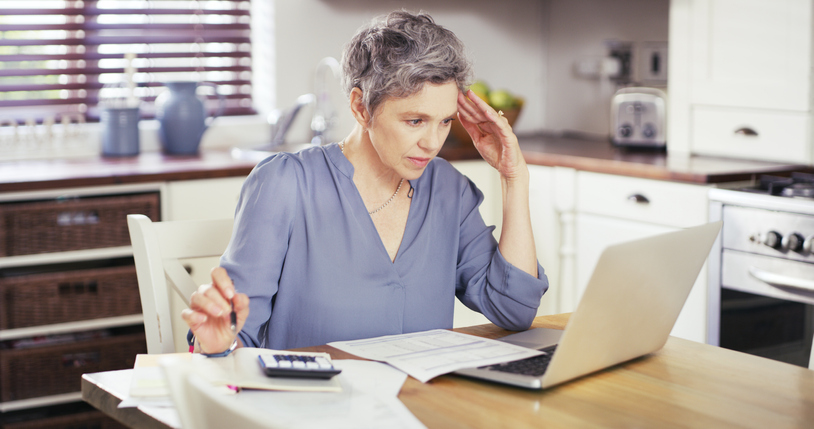
Almost everyone has a checking account, but the amount of money people keep in their checking accounts varies widely. Checking account balances tend to vary with income, age and other factors. Deciding how much money to keep in your personal checking account requires looking at more than your paycheck and birth certificate, however. Here’s what you need to know.
If you need more financial help beyond checking, a financial advisor can work with you to create a plan for your savings and investments.
Understanding the Role of Checking Accounts
Most people with checking accounts use them regularly for spending, often multiple times a day. They tap funds in their accounts using debit cards, online transfers, automatic drafts, ATM transactions, cash withdrawals and old-fashioned paper checks.
Checking accounts are tools, not investments, but they are some of the most well-worn utensils in nearly everyone’s financial kit. They enable countless vital financial tasks, from paying rent and buying groceries to gassing up the car and keeping the electricity turned on.
Obviously, you don’t want your checks to bounce, since that will cost you overdraft fees. Perhaps somewhat less obviously, you don’t want to keep more money in checking than you need. That’s because most checking accounts don’t pay interest on the balance and interest-bearing checking accounts generally pay lower rates than other accounts and investments.
With all this in mind, what’s the ideal checking account balance? No single answer suits everybody. Some people need more, some less. But it’s relatively easy to figure out your own ideal checking account balance if you examine the relevant factors.
What’s the Typical Checking Account Balance?

The average checking account balance is about $9,100, but this might not be the right number for everyone. For one thing, that average is inflated by a relatively small number of people who keep large balances. The median, which is the point at which half the people have more and half have less, is about $2,900.
Behind those broad measures of the whole population of checking account holders, you can find variations around individuals’ specific characteristics. Not surprisingly, those with higher incomes tend to have larger checking account balances.
Less obviously, perhaps, as people grow older, checking account balances also tend to increase, peaking around ages 65-74. The takeaway here is that, whatever figure you decide is your ideal checking balance, be prepared to revise it as you age or if you start earning more.
What’s the Ideal Checking Account Balance?
The theoretical ideal amount might seem to be exactly as much as you will need to cover any outflows until the next time your paycheck, investment dividend distribution, monthly government or pension benefit or other source of income arrives to bulk your account back up. That would mean avoiding any overdraft fees and not leaving a penny more than necessary in a no- or low-interest deposit account.
But there’s more to this calculation than that. Also consider:
-
Unanticipated outflows – If you fail to account for an irregular auto payment such as a semi-annual insurance premium, you may get overdrawn and start having to pay overdraft and bounced check charges.
-
Pre-authorization holds – Some merchants may place a hold on a portion of your funds until a transaction clears, potentially reducing available funds in the account. A good balance helps ensure this doesn’t lead to an overdrawn account.
-
Account minimums – Many checking accounts charge monthly maintenance fees if your balance slips below a certain amount. To avoid these fees, it can be well worth it to keep enough in the account so that you always meet the minimum.
-
Emergencies and special cases – Certain situations ranging from obtaining essential supplies in the wake of natural disasters to making purchases from a small local merchant at a farmer’s market often call for cash, not credit.
-
Lost earnings – While some checking accounts pay interest on cash balances, most do not and those that do pay less than alternative accounts such as high-yield savings accounts, money market accounts or certificates of deposit. Over time, keeping significantly more than you need in checking can cost you.
To complicate the issue, the type of account matters. For instance, some checking accounts don’t have minimums or charge low or no fees. If you ask your bank about basic or student accounts, you may be able to identify some of these and be less concerned about having a low balance.
To help you stay on top of your balance and manage it for best advantage, consider budgeting apps that track your spending. This is must-have info for determining an optimal checking account balance.
If all that’s too complicated, the general recommendation is to maintain one to two months’ worth of living expenses in your checking account. Some experts even advise adding an extra 30% as a cushion, although that is just a rule of thumb and may be more than many people need.
Bottom Line

The ideal checking account balance varies based on individual circumstances and the need to balance competing concerns. At a minimum, you want to keep enough in there to avoid bounced checks and overdrafts and their associated fees and other inconveniences. But you don’t want to go overboard avoiding fees, because then you would be missing out on money you could earn by putting it in an interest-bearing account or investment.
Financial Planning Tips
-
Review your finances regularly and, if you see something you don’t understand or just aren’t sure what to do, consider consulting a financial advisor. SmartAsset’s free tool matches you with up to three vetted financial advisors who serve your area, and you can have a free introductory call with your advisor matches to decide which one you feel is right for you. If you’re ready to find an advisor who can help you achieve your financial goals, get started now.
-
Why put your money into anything less than the best? SmartAsset’s regularly updated Best Checking Accounts feature lists, describes and provides links to the top checking accounts on the market.
Photo credit: ©iStock.com/LaylaBird, ©iStock.com/BongkarnThanyakij, ©iStock.com/PeopleImages
The post How Much Money Should I Keep in My Checking Account? appeared first on SmartReads by SmartAsset.








